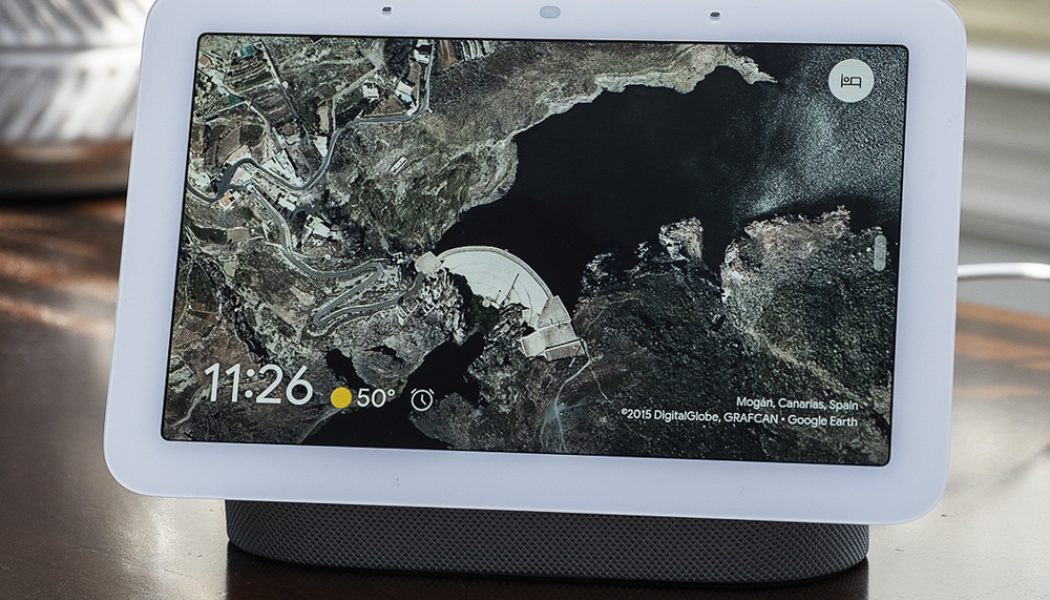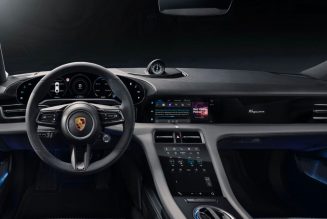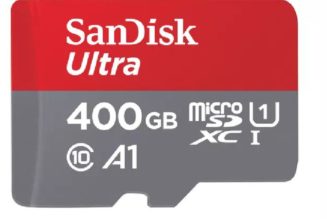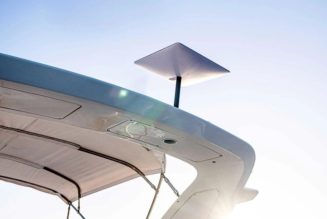Here’s the thing about the new $99.99 Nest Hub from Google: it is slow. Compared to almost any other touchscreen device you might own or interact with, the Nest Hub is laggy, sluggish to respond, and has stuttering animations all over the place.
The reason for this is because since Google first launched the original Home Hub in 2018 (now known as the Nest Hub), it has regularly been adding more features and more capabilities to the device. While it was essentially a digital photo frame and basic smart speaker with a screen at its debut, the Nest Hub is now capable of being a smart home control center, fancy alarm clock, weather machine, media center, communications hub, and more. It’s a lot of stuff for the processor in this little screen-with-a-speaker to handle.
The latest feature that Google has added is automatic sleep tracking, which uses special sensors built into the new Nest Hub’s display bezel to track your movement and breathing at night to evaluate your sleep. Google is also using those sensors to add some basic gesture controls, and it has beefed up the speaker inside the Nest Hub to improve its audio quality.
For the 20 percent of Nest Hub owners that keep the device in their bedroom (according to Google), this new sleep tracking feature works very well — it’s by far the easiest and most comfortable way to track sleep that I’ve tested. But for the other 80 percent, I’m disappointed the new Nest Hub hasn’t meaningfully improved the experience over the prior model.
Slow might be okay when all you’re doing is looking at photos or asking for a weather report, but when a device is promising to be a true smart home hub, speed matters a lot more.
The design of the new Nest Hub is almost identical to the first version: it’s a 7-inch touchscreen perched atop a base with a speaker in it. The screen itself is the same as before, with a 1024 x 600 pixel resolution and Google’s automatic ambient brightness and color adjustment features that make images look great no matter the time of day or lighting in the room. Google has dropped the small lip around the bezel that was on the prior model — this makes it a little easier to wipe the screen clean.
The rest of the Nest Hub is just like the prior model, but now you can get it in a light blue color in addition to the light gray, dark gray, and light red fabric options. It still doesn’t have a camera, which is a good thing if you plan on putting this thing next to your bedside, though it now has three far-field microphones instead of the two on the last version. A physical mute switch is on the back to disable them if you wish.
The first Home Hub had a rather lousy speaker that was easily trumped by smart speakers that cost half as much, so I’m glad that Google used a larger, 1.7-inch driver in the new model. The sound is fuller, with better bass response, and the Google Assistant’s voice sounds more pleasant when it responds back to me. The Nest Hub still won’t take the place of a Nest Audio or other well-equipped wireless speaker when you really crank it, but it no longer puts a frown on my face when playing music or podcasts.
:no_upscale()/cdn.vox-cdn.com/uploads/chorus_asset/file/22399100/dseifert_20210323_4485_0001.jpg)
The interface that Google started rolling out to the older Nest Hub late last year really invites you to touch the screen and rely less on voice commands to do everything. But as I mentioned at the outset, the Nest Hub is just too slow to really make this a pleasant experience. There’s a noticeable delay whenever I touch the screen and the animations to switch between the Nest Hub’s various functions are stuttery. Google says it is using a faster processor in this new model, but wouldn’t specify how much faster, and I couldn’t tell the difference between it and the prior version when it came to swiping around the screen and tapping buttons.
That means that instead of using the touchscreen, I’m still using my voice to control the Nest Hub most of the time. But even there, the new model is slow to respond, with a long enough lag and delay to recognize my voice commands that I often wonder if it heard me at all. The ability to transcribe and show me what it heard right on the screen is one of the best features the Nest Hub has over Amazon’s smart displays, but watching each word slowly populate on the screen feels like I’m watching a TV show with closed captions that are three lines behind the actual dialog.
Google claims the new model has an on-device machine-learning chip to speed up the Assistant, that will learn common commands over time to further improve responsiveness. But as with the allegedly faster processor, if the new Nest Hub is any faster than before, I didn’t notice it in my everyday use. The fastest voice assistant in my experience remains Siri on a HomePod, followed by Alexa on Amazon Echo speakers and displays, and then the Google Assistant on Nest products.
:no_upscale()/cdn.vox-cdn.com/uploads/chorus_asset/file/22399113/dseifert_20210323_4485_0014.jpg)
All of that is a lot of criticism, which is applicable if you use the Nest Hub in a kitchen, home office, living room or somewhere else in your home. But if you do put it in your bedroom, I am happy to report that it is a very good smart alarm clock and automatic sleep tracking device.
The sleep tracking is enabled by Soli radar sensors in the Nest Hub’s bezel. Google’s been trying to find a use case for the Soli technology ever since it debuted in the Pixel 4 smartphone in 2019, and I think this might be the best application of it yet.
Unlike wrist-worn fitness bands or smart watch sleep trackers, the Nest Hub doesn’t require you to wear anything to bed and doesn’t need to be recharged from time to time. You just place it on your nightstand about an arm’s length or less away from your bed, and point the screen towards where you sleep. Its radar sensors are sensitive enough to track your breathing and movement, so the Nest Hub can tell when you’re moving, when you’ve fallen asleep, and when you’ve woken up. Its microphone records how often you cough and snore during the night, which might put an end to many spousal arguments.
Google claims the Nest Hub’s sleep tracking can be as accurate as much more scientific methods, though I wasn’t able to actually test that. In my experience, it works just as well as the Fitbit Inspire HR I wore to bed alongside it, often landing within 10 minutes of what the Fitbit recorded. It also claimed I snored a number of minutes each night, and is able to record the room temperature and brightness levels during the night — data points that wrist-worn trackers just don’t have. If it’s too warm, too cold, or too bright in the room for optimal sleep conditions, the Nest Hub might suggest I change the thermostat or adjust the lighting.
(For the smart home aficionados, no, it is not yet possible to trigger Google Home routines using the new temperature sensor in the Nest Hub. Neither is it possible to yet do anything with the Thread radio that’s in the Hub — it’s dormant for the time being.)
:no_upscale()/cdn.vox-cdn.com/uploads/chorus_asset/file/22399102/dseifert_20210323_4485_0002.jpg)
:no_upscale()/cdn.vox-cdn.com/uploads/chorus_asset/file/22399111/dseifert_20210323_4485_0012.jpg)
:no_upscale()/cdn.vox-cdn.com/uploads/chorus_asset/file/22399109/dseifert_20210323_4485_0010.jpg)
:no_upscale()/cdn.vox-cdn.com/uploads/chorus_asset/file/22399112/dseifert_20210323_4485_0013.jpg)
Each morning when I wake up and dismiss the alarm, the Nest Hub gives me a report on how well I slept the night before. It tells me what time I “went” to bed, what time I fell asleep, how long I was sleeping, how long during the night I snored or coughed, my respiratory rate, and if I adhered to my intended schedule.
After a number of nights measuring my sleep, the Nest Hub provided suggestions on how I can improve its quality — so far, it tells me I’m doing a poor job sticking to my sleep schedule, though not for the reasons you might expect. Because I tend to lie in bed reading or watching TV before going to sleep each night, the Nest Hub claims I go to bed one to two hours before I actually fall asleep and chides me for doing so.
All of this data is also available in the Google Fit app on a smartphone. Google does not yet give a numerical score for the quality of sleep, like other sleep trackers do, but I wouldn’t be surprised if that’s added in a future update. In its announcement of the Nest Hub earlier this month, Google said the sleep sensing features will be available as a free preview for all Nest Hub owners until next year, but it declined to give specifics on how much it will cost after the free preview.
The Nest Hub’s sleep tracking is convenient, but it’s far from perfect. As mentioned, it can’t tell the difference between me lying in bed and reading or watching TV or attempting to fall asleep, activities that rarely tripped up my Fitbit, which relies on heart rate and movement measurements to evaluate sleep. I also am trusting that its microphones are picking up my coughs and snores and not my spouse’s — I really have no way to verify that data without sticking a camera in my bedroom and recording the night, which I’m not willing to do. And like every other sleep trackers you can buy, the Nest Hub is able to provide a lot of data, but it cannot diagnose sleep disorders or really provide any helpful insights other than the obvious ones of sticking to a routine and making sure the room is quiet and comfortable. This is very much a wellness device and not something to take the place of medical diagnoses.
Still, the Nest Hub’s automatic sleep tracking is extremely easy to use and I really like how I don’t have to wear an uncomfortable bracelet to bed each night or bother with remembering to charge its battery.
:no_upscale()/cdn.vox-cdn.com/uploads/chorus_asset/file/22399106/dseifert_20210323_4485_0007.jpg)
Beyond the sleep tracking, the Nest Hub is also a very good smart alarm clock. I can easily set the alarm with my voice; there are a variety of alarm sounds to choose from in addition to music or a radio station of my choice; and I can simply wave an arm in front of the Hub to snooze the alarm (another new feature enabled by the Soli sensors) or say “stop” when I’m ready to get out of bed. There’s also the option to gradually brighten the Hub’s screen or turn on smart lights in my room before the alarm sounds to mimic a sunrise, but that was more annoying than helpful for me and I ended up turning it off after a few nights.
One thing to be aware of: the Nest Hub, like other smart displays, does not have a backup battery, so if you lose power overnight and it’s not restored by the time your alarm is supposed to go off, the Nest Hub will not wake you up.
Overall, the new Nest Hub is a minor update over the prior model, with some handy new sleep tracking features that may or may not be important to you. The Nest Hub is still an excellent digital picture frame for images you have stored in Google Photos, and it’s a competent smart speaker and smart display. I actually prefer it over Amazon’s Echo Show devices for the purpose of being an ambient screen that automatically rotates through memories because all of my photos are in Google Photos, not Amazon’s cloud.
But I wish Google had spent as much time optimizing the performance and experience of the Nest Hub as it has adding new features, which seem to be bogging down the device more than anything else. If you’re embedded in the Google Home platform, the Nest Hub’s price and compact size make it easy to add to your home, but otherwise, life is too short for slow computers.
Photography by Dan Seifert / The Verge









